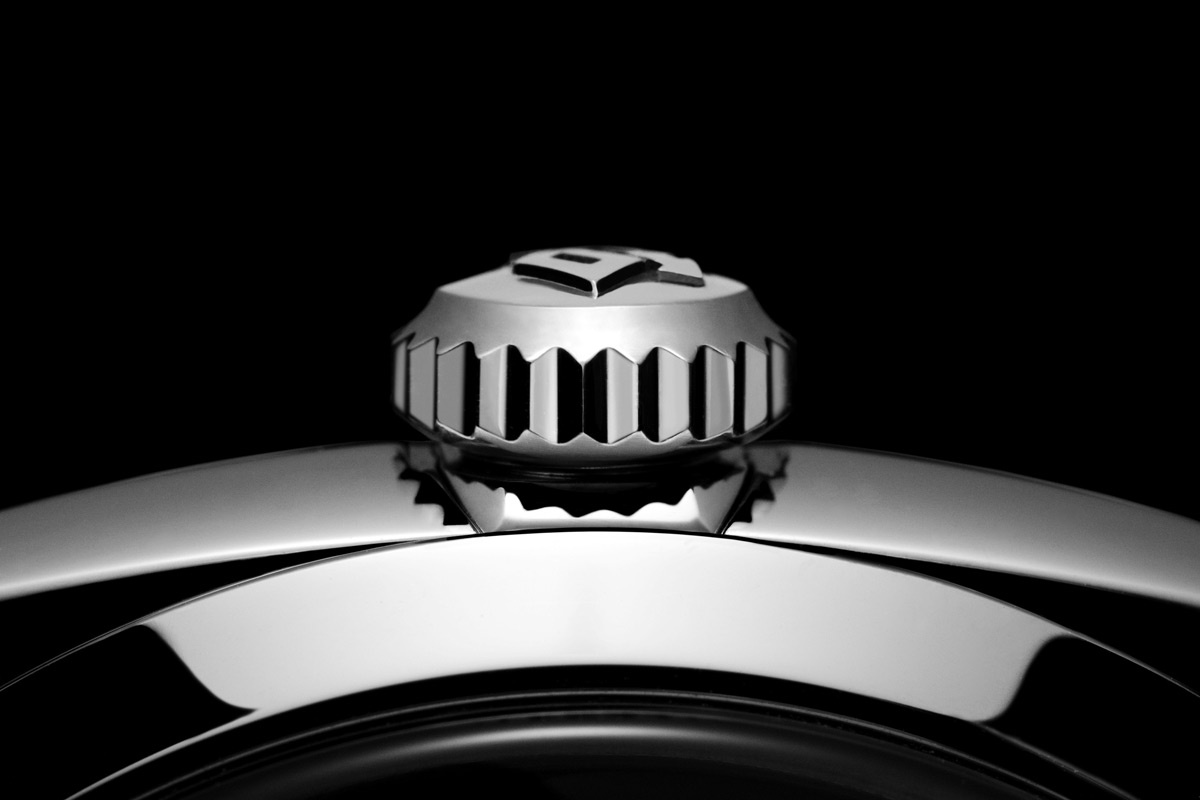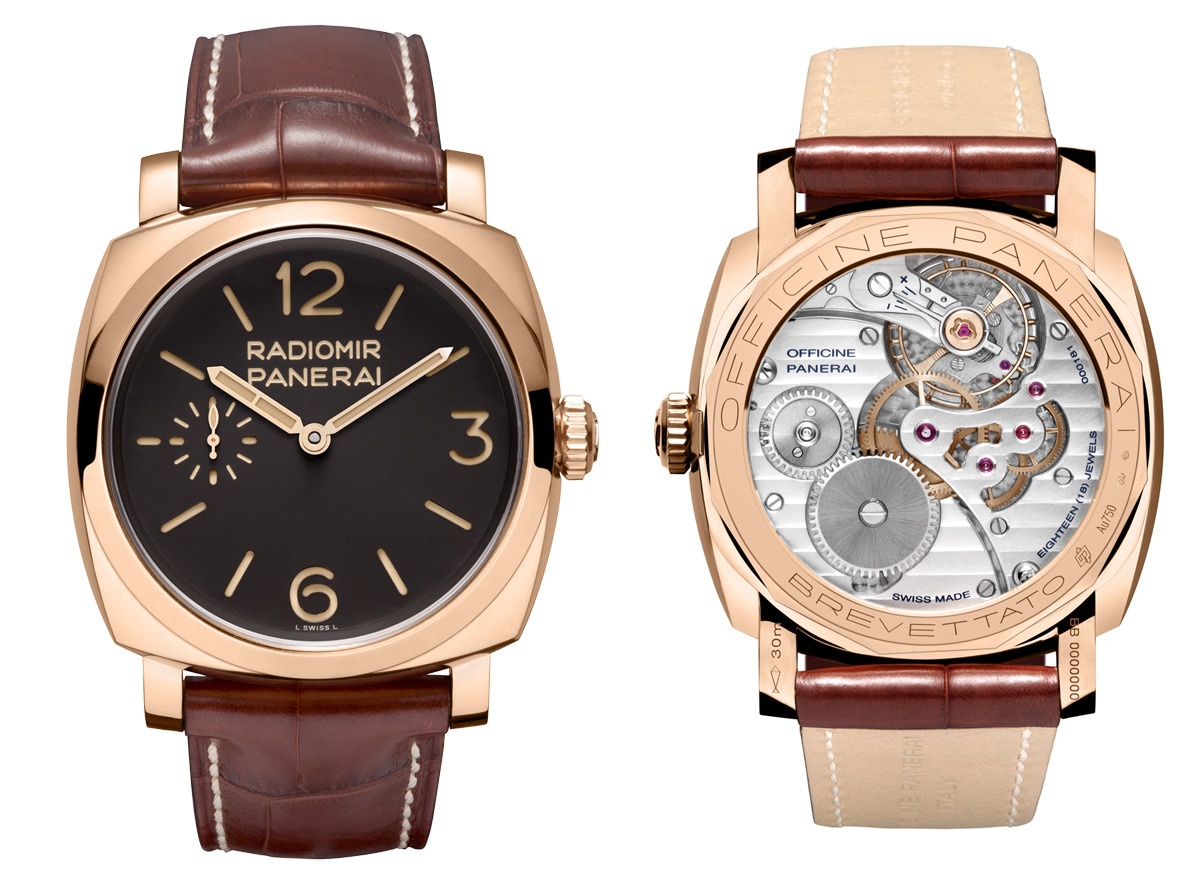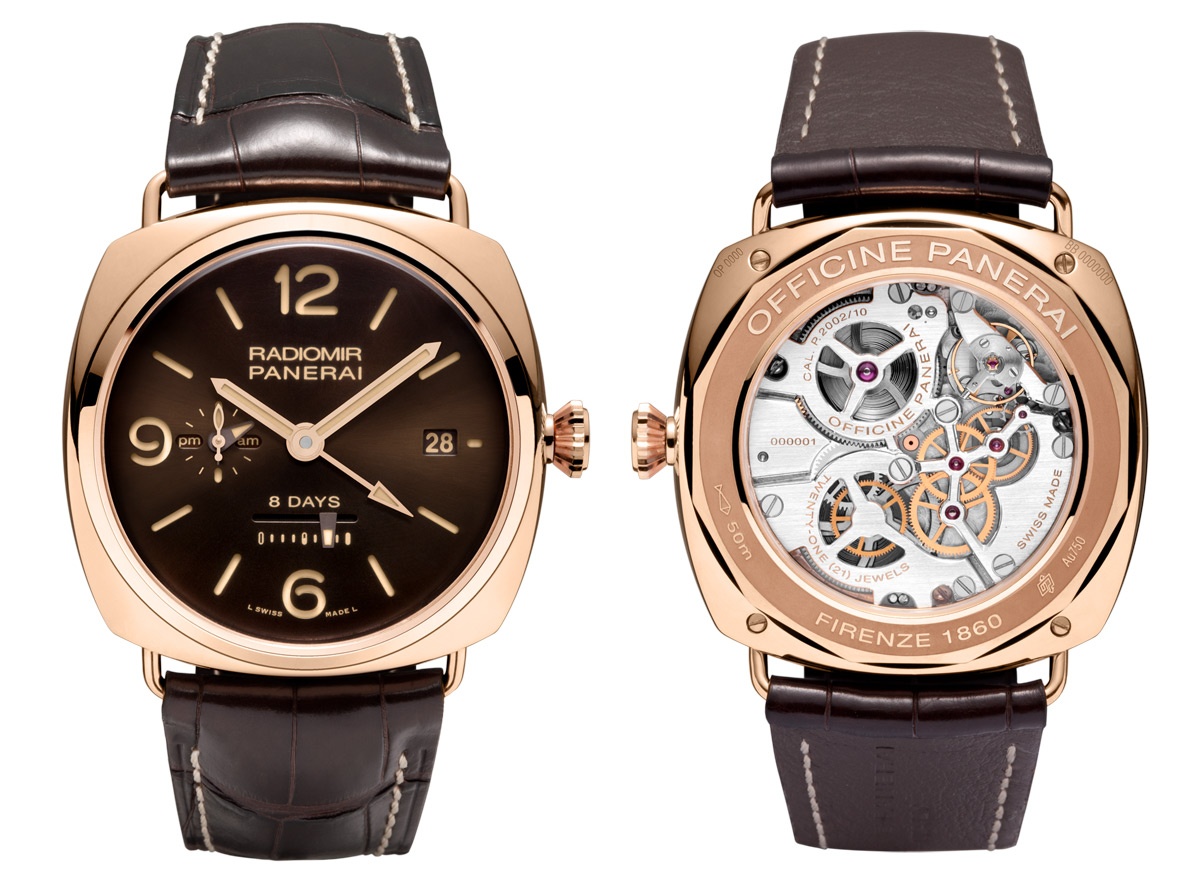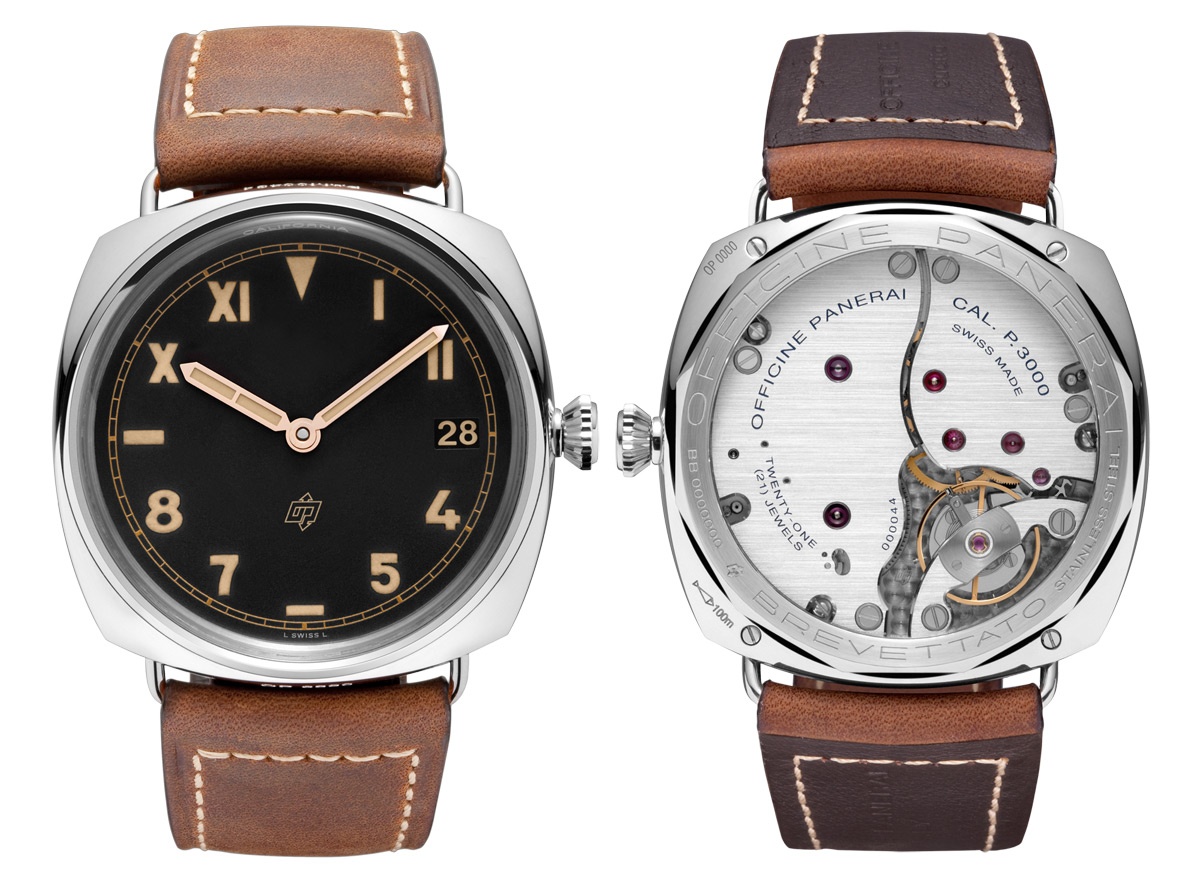Panerai - Radiomir 1940
Vintage looks were a hot trend among the exhibiting brands at this year’s SIHH watch fair in Geneva, and Panerai was no exception. However, unlike so many of its contemporaries, whose vintage-style models are characterized by smaller dimensions and thinner cases, Panerai’s are even bigger than some of its modern watches. Case in point: the new Radiomir 1940 Oro Rosso 47 mm Special Edition.
PAM 00398 – RADIOMIR 1940 ORO ROSSO – 47 MMPanerai’s history, as many of its diehard fans know, begins in the 1930s in Florence, as a maker of timepieces for Italian naval divers to use for underwater missions. Most of the early Radiomir models had strap attachments made from steel wires welded to the case, but some models made in 1940 had a different case design in which the lugs were formed from the same block of steel as the case, making them stronger and more solid and also resulting in the case itself being larger.
These gargantuan yet classic dimensions are replicated in the 47-mm diameter, polished, rose-gold case of the Radiomir 1940 Oro Rosso (Italian for “red gold”), whose shorter, Paneristi-friendly reference number is PAM 00398. The gold used for the case is 5NPt, an alloy with an unusually high percentage of copper (24.1 percent) for a richer, redder hue. A smattering of platinum in the alloy (.4 percent) aids in protecting the case against oxidation. The screw-down crown on the right side of the case bears the vintage “OP” logo for “Officine Panerai.”
The brown dial contrasts nicely with the rose-gold case and echoes the color of the brown alligator strap. Like other Radiomir dials, it uses Panerai’s signature “sandwich” construction, in which two thin plates surround a layer of Super-LumiNova. The Arabic numerals and hour indices are perforated apertures on the upper plate, allowing the luminosity to shine through. The hour and minutes hands, as well as the small seconds hand on the subdial at 9 o’clock, are also coated with Super-LumiNova. The engraved logo on the dial is executed in 1940 period lettering and the case and reference numbers are engraved between the lugs. The curved crystal above the dial also contributes to the historical authenticity: it’s made out of 3-mm-thick Plexiglas, like the one in its historical predecessor, rather than sapphire.
The movement in the watch also contributes to its vintage appeal: Panerai’s OP XXVII, which is based on a caliber made by the legendary Swiss movement specialist Minerva, now owned by Montblanc, Panerai’s sister brand in the Richemont Group. The manual-wind 16 3/4-ligne caliber is visible through a sapphire caseback window. Among its attributes are a variable inertia balance with swan’s neck micrometric regulator, a Kif Parechoc anti-shock device, and a Glucydur balance that beats at 18,000 vph. It has a power reserve of 55 hours.
The Radiomir 1940 Oro Rosso is offered in a limited edition of 100 pieces, at a retail price of $55,500 each. There is also a Radiomir 1940 Special Edition in a steel case (PAM 00399), with a polished finish and a black dial, also limited to 100 pieces, that retails for $29,800. For the first 50 numbered models of each, Panerai has created 50 boxed sets containing both watches; the boxes are priced at $85,300.
--------------------------------------------------------------------------------------------------
------------------------------------
PAM 00395 – RADIOMIR 8 DAYS GMT ORO ROSSO – 45 MM
--------------------------------------------------------------------------------------------------
------------------------------------------
PAM 00399 – RADIOMIR 1940 – 47 MM
--------------------------------------------------------------------------------------------------
-------------------------------------
PAM 00424 – RADIOMIR CALIFORNIA 3 DAYS – 47 MM
--------------------------------------------------------------------------------------------------
-------------------------------------
PAM 00425 – RADIOMIR S.L.C. 3 DAYS – 47 MM
--------------------------------------------------------------------------------------------------
-------------------------------
PAM 00448 – RADIOMIR CALIFORNIA 3 DAYS – 47 MM
--------------------------------------------------------------------------------------------------
---------------------------------
PAM 00449 – RADIOMIR S.L.C. 3 DAYS – 47 MM
panerai.watchprosite.com
----------------------------------------------------------------
www.Paneraicollection.com






















.jpg)